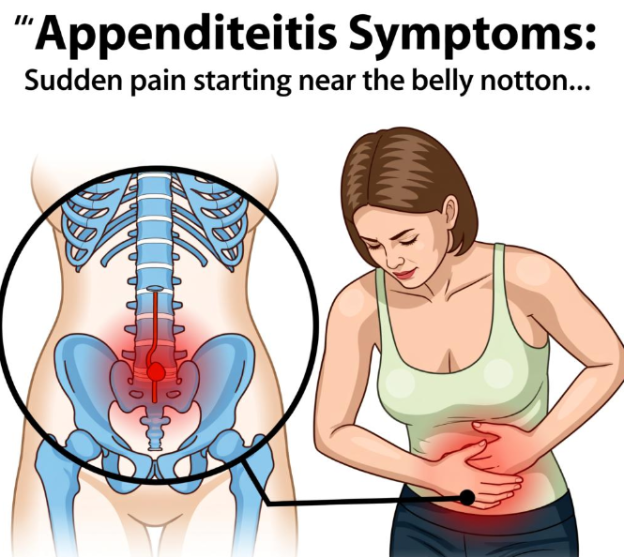Almost every acute appendicitis begins with abdominal pain: initially dull or vague around the umbilicus; in roughly 70-80% of adults it migrates to the right lower quadrant (McBurney point) within 6-8 h and is worsened by coughing, walking, or pressure. Sudden spread suggests possible perforation.
Nausea, vomiting, and loss of appetite accompany the pain; vomitus is usually gastric, and children may vomit more often.
Temperature is usually low-grade (37-38℃); with suppuration or perforation it may exceed 38.5℃ and be accompanied by chills and malaise.
Altered bowel motility causes constipation or diarrhea; a pelvic appendix may irritate the rectum, producing tenesmus and urinary frequency.
When inflammation reaches the peritoneum, rebound tenderness and guarding appear; board-like rigidity with absent bowel sounds signals diffuse peritonitis.
An inflammatory mass or abscess may be palpated in the right lower quadrant with local warmth, indicating peri-appendiceal abscess.
Specific signs include Rovsing (right lower pain on left-side compression), psoas (pain on hip extension), and obturator (pain on hip flexion–internal rotation) signs.
Elderly patients feel less pain and may appear only mildly ill despite gangrene; in pregnancy the appendix is displaced upward, so pain is higher than the classic McBurney point.
| Key Symptoms/Signs | Typical Presentation |
|---|---|
| Migrating RLQ pain | Umbilical → McBurney point, movement/cough ↑ |
| Nausea & vomiting | Anorexia, gastric vomitus |
| Low-grade fever | 37-38℃, rises if perforation |
| Bowel changes | Constipation or diarrhea |
| Peritoneal signs | Rebound, guarding, rigidity |
| Inflammatory mass | Palpable, warm, tender |
| Specific maneuvers | Rovsing, psoas, obturator positive |
| Atypical variants | Elderly: subtle; Pregnancy: higher pain |
